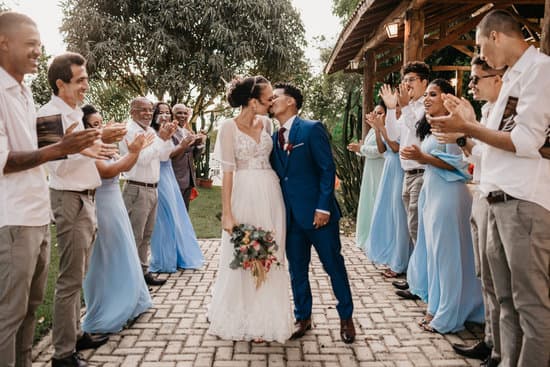The tradition of wedding rings holds a special place in cultures around the world, and this is certainly no different for the royal family. From ancient times to modern traditions, royal wedding rings have been a symbol of love, unity, and commitment. In this article, we will explore the history of royal wedding rings, debunking myths and clarifying traditions surrounding them.
Throughout history, royal wedding rings have played a significant role in showcasing the love and unity between monarchs. From Queen Elizabeth II to Meghan Markle, each member of the royal family has their own unique story behind their wedding bands. We will also delve into the significance of these wedding rings in royal family culture and how they continue to be an important symbol of tradition and heritage.
Join us as we take a closer look at the history, symbolism, and personal preferences surrounding royal wedding rings. Whether you’re curious about the origins of this timeless tradition or simply interested in learning more about notable royal wedding rings, this article aims to provide an insightful glimpse into the fascinating world of royal matrimony.
History of Royal Wedding Rings
The history of royal wedding rings is a fascinating journey that spans centuries, from ancient times to modern traditions. Throughout history, the exchange of wedding rings has been a symbol of love, unity, and commitment. The tradition of exchanging rings during marriage ceremonies dates back to ancient Egypt and has evolved over time to become an integral part of royal weddings.
Ancient Traditions
In ancient times, the giving and receiving of rings were seen as a symbol of eternal love and commitment. The circular shape of the ring was believed to represent eternity, with no beginning or end, making it the perfect symbol for marriage. In royal families, the exchange of wedding rings signified the union between two people as well as their respective kingdoms or dynasties.
Modern Adaptations
As time passed and traditions evolved, royal wedding rings became more elaborate and symbolic. With advancements in jewelry craftsmanship, royals began to incorporate precious stones and intricate designs into their wedding bands. Modern royal wedding rings not only embody the timeless tradition of exchanging rings but also showcase the individual style and personality of the wearer.
The history of royal wedding rings is a testament to their enduring significance in royal family culture. From ancient rituals to modern adaptations, these symbols of love and unity have played an important role in royal weddings for centuries. As we continue to debunk myths and clarify traditions surrounding the Royals’ choice to wear wedding rings, it becomes evident that these timeless symbols hold a special place in their cultural heritage.
The Royal Engagement Ring
The significance of the royal engagement ring can be traced back to ancient Roman times when rings were exchanged as a symbol of ownership and devotion. Over time, this tradition transformed into a symbol of unity and love, with the circular shape representing eternity and everlasting love. The royal engagement ring is often seen as a public declaration of the couple’s intention to marry, as well as their commitment to each other.
In modern times, the royal engagement ring has become a highly anticipated aspect of any royal relationship. The public eagerly awaits the unveiling of the ring as it provides insight into the personal tastes and preferences of the couple. The choice of gemstone, design, and setting can all hold significant meaning for both the giver and receiver, making it a deeply personal piece that reflects their love story.
- The significance of the royal engagement ring:
- Symbolism of love and unity
- Public declaration of intention to marry
- Reflection of personal tastes and preferences
This section explores how the royal engagement ring continues to be a cherished tradition within the royal family while also allowing for individual expression and creativity. From Queen Elizabeth II’s classic diamond solitaire to Meghan Markle’s contemporary trilogy setting, each royal engagement ring tells its own unique story within the rich tapestry of royal history.
The Royal Wedding Bands
In the world of royalty, wedding bands hold a significant role in the marriage traditions of the royal family. The custom of exchanging wedding rings dates back centuries and continues to be an essential part of royal weddings to this day. However, despite being steeped in tradition, there is also room for personal preference when it comes to choosing and wearing wedding bands.
Traditionally, royal wedding bands are made from Welsh gold, a rare and precious metal with deep cultural significance. This tradition dates back to 1923 when Queen Elizabeth II’s mother, Lady Elizabeth Bowes-Lyon, was gifted a Welsh gold band for her marriage to King George VI. Since then, this precious metal has become a staple in the royal family’s wedding rings, symbolizing their connection to Wales.
While tradition dictates the use of Welsh gold for royal wedding bands, there have been instances where members of the royal family have opted for different materials based on personal preference. For example, Meghan Markle chose a simple yellow gold band to match her engagement ring when she married Prince Harry in 2018. This departure from tradition sparked conversations about the significance of personal style and individual preferences within the royal family.
When it comes to the design of royal wedding bands, some members of the monarchy have chosen to incorporate family heirlooms or personalized touches into their rings. From engraving initials and meaningful dates to incorporating gemstones with historical significance, there is a delicate balance between honoring tradition and embracing personal preference when it comes to selecting and wearing wedding bands within the royal household.
Do Royals Choose Their Own Wedding Bands?
- Welsh Gold Tradition
- Personal Preferences
- Incorporating Family Heirlooms
Do the Royals Wear Wedding Rings? Debunking Myths and Clarifying Traditions
The tradition of wearing wedding rings has been an important aspect of royal marriages for centuries. While there may be myths and misconceptions surrounding whether or not the royals wear wedding rings, it is important to debunk these and clarify the traditions that have been passed down through generations.
Myth vs. Reality
Contrary to popular belief, the majority of royal couples do wear wedding rings. The tradition of exchanging rings during the wedding ceremony is a timeless symbol of commitment and unity, which holds true for members of the royal family as well.
While there have been a few exceptions to this tradition in the past, such as Prince William choosing not to wear a wedding ring after his marriage to Kate Middleton, it is not an overarching rule for all members of the royal family.
Traditional Significance
In royal culture, the exchange of wedding rings symbolizes the everlasting commitment and love between two individuals entering into marriage. The significance of this tradition is deeply rooted in history and serves as a tangible representation of the vows exchanged during the wedding ceremony. It also serves as a public declaration of their union, showcasing their commitment to one another in front of their families, friends, and the public.
Personal Preferences
While many members of the royal family adhere to this tradition by wearing wedding rings, some may choose not to for personal reasons. These reasons may vary from individual preferences to practical considerations based on their daily activities and responsibilities within their roles.
However, it is important to recognize that personal choices regarding whether or not to wear wedding rings do not diminish the significance or symbolism that they hold within royal culture. Ultimately, whether or not royals wear wedding rings is a matter shaped by both tradition and personal choice.
Notable Royal Wedding Rings
The royal family is known for its opulent and historically significant jewelry, and their wedding rings are no exception. Queen Elizabeth II, the longest-reigning monarch in British history, wears a simple gold wedding band that holds great sentimental value.
The band was made from Welsh gold, a tradition that dates back to 1923 when it was used for the wedding ring of Queen Elizabeth’s parents, King George VI and Queen Elizabeth The Queen Mother. This tradition has continued with other royal brides, including Kate Middleton and Meghan Markle.
Speaking of Meghan Markle, her engagement ring and wedding band have become the subject of much admiration and curiosity. Prince Harry designed Meghan’s engagement ring himself, incorporating two diamonds from Princess Diana’s personal collection and a center diamond from Botswana. For their wedding bands, the couple opted for traditional Welsh gold bands like other royal couples before them.
In addition to these examples, there are countless other notable royal wedding rings throughout history that reflect the unique love stories of each couple. These rings often carry deep symbolism and cultural significance, showcasing the rich traditions and romantic legacies within the royal family. Ultimately, while there may be variations in style and design among royal wedding rings, they all share a common thread – they symbolize love, unity, and commitment within one of the most influential families in the world.
| Royal | Wedding Rings |
|---|---|
| Queen Elizabeth II | Simple gold wedding band made from Welsh gold |
| Meghan Markle | Engagement ring with diamonds from Princess Diana’s collection & center diamond from Botswana; Traditional Welsh gold band for her wedding ring |
The Significance of Wedding Rings in Royal Family Culture
Royal wedding rings have always held a special significance in the culture and traditions of the royal family. These symbols of love and unity have been a part of royal weddings for centuries, serving as a visible representation of the bond between two individuals and their commitment to each other. Unlike many modern couples, the royals do wear wedding rings, but the style and design may vary depending on personal preferences and traditions.
One of the most famous royal engagement rings is the one that currently adorns the finger of Catherine, Duchess of Cambridge. This stunning sapphire and diamond ring was previously worn by Princess Diana, making it an iconic symbol not just of love, but also of a powerful connection between generations. Similarly, Meghan Markle’s engagement ring features diamonds from Princess Diana’s personal collection, adding another layer of meaning to her own marital jewelry.
In addition to engagement rings, royal wedding bands also hold a great deal of significance. Traditionally, these bands are made from Welsh gold, a tradition that dates back to 1923 when Queen Elizabeth The Queen Mother was gifted a nugget of gold from a mine in North Wales.
Since then, members of the royal family have continued this tradition with their own wedding bands, symbolizing their connection to Wales and honoring the country’s rich history. While there are guidelines and traditions surrounding royal wedding rings, ultimately each member of the royal family is able to choose or design their own rings according to their personal taste and style.
| Royal Engagement Rings | Royal Wedding Bands |
|---|---|
| Catherine, Duchess of Cambridge: iconic sapphire and diamond ring | Traditionally made from Welsh gold |
| Meghan Markle: diamonds from Princess Diana’s collection | Varying designs based on personal preference |
Conclusion
In conclusion, the tradition of royal wedding rings has spanned centuries, evolving from ancient customs to modern preferences. From the historical significance of royal wedding rings to debunking myths about whether or not the royals actually wear them, it is clear that these bands hold great importance within the royal family culture.
The symbolism of unity and love represented by these rings is not lost on the royal family members. Whether it’s Queen Elizabeth II’s simple gold band or Meghan Markle’s elegant diamond-studded ring, each royal couple has chosen their wedding bands based on tradition as well as personal preference.
Despite the public’s fascination with royal weddings and their accompanying traditions, the decision to wear or not wear wedding rings is ultimately a personal one for each royal couple. However, it cannot be denied that these symbolic bands play a significant role in representing the eternal bond and commitment between partners in the royal family.
Ultimately, while traditions may evolve and change over time, the timeless symbolism of royal wedding rings remains a steadfast symbol of love and unity within the British monarchy.
Frequently Asked Questions
Do Royalty Wear Wedding Rings?
Yes, members of royalty do wear wedding rings. It is a tradition for them to exchange rings during their wedding ceremony, just like any other couple.
Does Prince William Ever Wear a Wedding Ring?
Prince William does not typically wear a wedding ring. This is a personal choice for him and is not uncommon among royal men. While his wife, Kate Middleton, wears her wedding ring, William has chosen not to.
Does Harry Wear a Wedding Ring?
Prince Harry does wear a wedding ring. Unlike his brother, Prince William, Harry has been seen wearing a simple platinum band on his finger since marrying Meghan Markle in 2018. This reflects his personal preference and modern approach to marriage traditions.

I have been involved in marriages for over 20 years helping couples and singles understand more about them.





